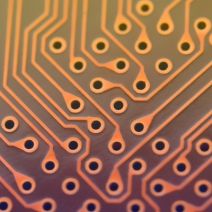 In July, IBM announced the development of a computer chip that’s four times more powerful than anything currently on the market. As cool as this news is, what makes it extra exciting is the fact that it’s an ultra-dense chip. Developments like this will be the driving force behind the advancement of computing, well into the next decade and beyond.
In July, IBM announced the development of a computer chip that’s four times more powerful than anything currently on the market. As cool as this news is, what makes it extra exciting is the fact that it’s an ultra-dense chip. Developments like this will be the driving force behind the advancement of computing, well into the next decade and beyond.
Thanks to this significant advancement in informatics, Moore’s Law may actually be relevant again; at a time when industry experts were beginning to think otherwise. In case you haven’t heard, the law derives from Intel’s co-founder Gordon Moore, who stated in 1965 that the number of transistors per square inch on integrated circuits will double every year.
For the most part, Moore’s Law held true for four decades. Yet, doubts begin to arise in recent years as it appeared like the physical limitations of chip building were reached. This point was made by renowned theoretical physicist Michio Kaku who said:
...we will see the collapse of Moore’s Law. In fact, already, we see a slowing down of Moore’s Law. Computer power simply cannot maintain its rapid exponential rise using standard silicon technology. Intel Corporation has admitted this.
Not so fast Michio, the good folks at IBM, Intel, AMG and other technology research companies figured out how to build new chips with alternative materials. These new materials allow for a greater density that essentially makes room for billions of transistors to be built into just one chip. It’s this silicon-germanium alloy that give IBM’s new chips the ability to produce the necessary semiconducting material needed to successfully produce integrated circuits for transistors, as illustrated here:

How do Intel’s newest chips stack up to what’s on the market today? Let’s take a look:
- The most advanced commercially-available chip: Intel’s i7-5960X processor has 2.6 billion transistors, and is built with a 22-nanometer process with their Tri-Gate 3D design.
- IBM’s newest chips: Have 20 million transistors and are built with a 7-nanometer process.
A seven nanometer process, what’s that look like? Well, consider the fact that a human hair is between 80,000 and 100,000 nanometers. This allows for manufacturers like Intel to cram a ton of transistors into a postage stamp-sized space. Pretty neat, huh?
It’s clear that the future of computing lies in nanotechnology as chip makers find new ways to push boundaries with new materials that can facilitate tens of billions of transistors. Of course, this begs the question, “Will this nanotechnology plateau in power like its predecessors, or will something new come along that will make all of this new tech look old and outdated?” Only time will tell.

